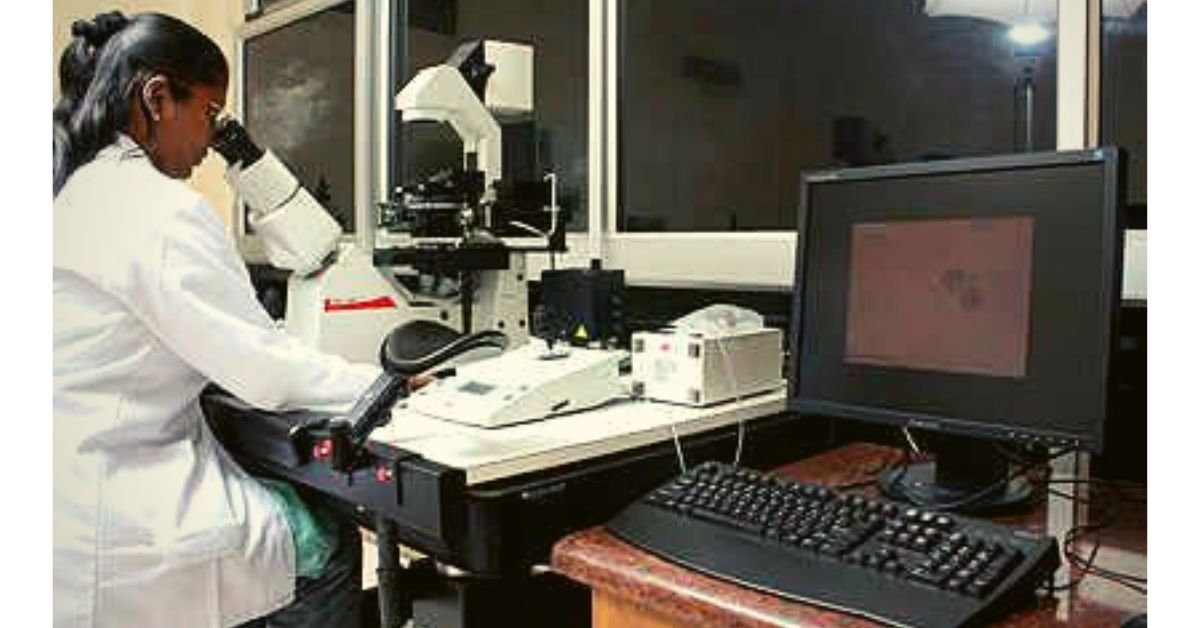Researcher Uses Physics to Help a Dad Bring His Daughter’s Murderers To Court
"She was a young lawyer who was protesting against a few eve-teasers. In retaliation, the goons ran her over. When I went to the spot, the clues were all there. All I did was bring them to notice using basic physics."

“We often plough so much energy into the big picture, we forget the pixels,” said New Zealand’s prominent jurist, Silvia Cartwright. An idea that often gets overlooked in the race for the larger goal.
For Keya Dharamvir, however, this is not the case. She is one of the few who spend every single day finding the true potential of science, in the details.
To see anything in detail, holistically calculate and analyse a given problem, one needs unwavering concentration and patience—something which resonates with the game of chess. What makes it
An expert in nano sciences, Keya is a superannuated faculty member of the physics department at Punjab University and a prominent researcher focused on using nanoparticles for innovations in agriculture.
However, it is not just her study, but her approach to science that makes her journey and her work even more interesting.
Coming from a background of scientific stalwarts, like N K Sur, a physicist who collaborated with C V Raman, Keya always wanted to be a scientist.
Speaking to The Better India, the 68-year-old professor, says
“My grandfather and my granduncles have been a great influence on me and inspired me to pursue research in science. One of the most important learnings was to focus on the basics, and I live by it.”
It is this learning that eventually helped her solve a case of murder and bring the culprits to court.
“It was sometime in the 1990s, when a friend from the Chemistry department sent a lawyer to my office, seeking help. He said that his daughter was killed by goons and that he needed my help in the investigation,” says Keya.
Although she did not have much experience in criminal investigation, she decided to step up.
She visited the spot and found the clues using basic scientific principles that helped change the case from an accident to a murder.

“She was a young lawyer who was protesting against a few eve-teasers. In retaliation, the goons ran her over. When I went to the spot, the clues were all there. There were no tire marks on the road where she was found, which should have been if it was an accident. Using basic principles of physics, I proved that the incoming vehicle had not applied any break, and hence, it was not an accident,” she explains.
Although we now have various simulations to unearth such cases, back then, her methodical calculations and analysis of the data, helped.
A landmark move at the time, she remembers how a day later, when she came to class, she received a standing ovation from all her students!
A promising study of India’s farmers

Keya is an IIT Kanpur alumna and a postdoctoral fellow from the Imperial College of Science and Technology in London. Her PhD and postdoctoral thesis based on mixed valence systems has over 400 citations and is considered to be a ground-breaking study.
At Punjab University, she works with the chemical engineering and botany departments to study the effect of nanoparticles on seeds.
When research in nanoparticles started in the 1980s, people predicted that it would make huge strides in the field of computer science. However, most of the success stories have been in medicine and bio-sciences. Even in this research, we are using carbon nanotubes, known for their conductivity and less toxicity to increase crop yield,” says Keya.
The process involves dipping the seeds in a solution of nanoparticles, after which they are dried and allowed to germinate. The results show a faster growth and higher yield, without increasing toxicity, she claims.
“Although we are in the prototype stage now, and are working to make this more affordable. This research has a huge potential in the long run!” she adds.
We hope her stellar work continues to break grounds and inspire future generations to use science beyond the boundaries of books and labs!
Also Read: Indian-Origin Scientist is Simplifying Science With a Pinch of Art & Humour!
(Edited by Shruti Singhal)
Like this story? Or have something to share?
Write to us: [email protected]
Connect with us on Facebook and Twitter
If you found our stories insightful, informative, or even just enjoyable, we invite you to consider making a voluntary payment to support the work we do at The Better India. Your contribution helps us continue producing quality content that educates, inspires, and drives positive change.
Choose one of the payment options below for your contribution-
By paying for the stories you value, you directly contribute to sustaining our efforts focused on making a difference in the world. Together, let’s ensure that impactful stories continue to be told and shared, enriching lives and communities alike.
Thank you for your support. Here are some frequently asked questions you might find helpful to know why you are contributing?


This story made me
-
97
-
121
-
89
-
167











